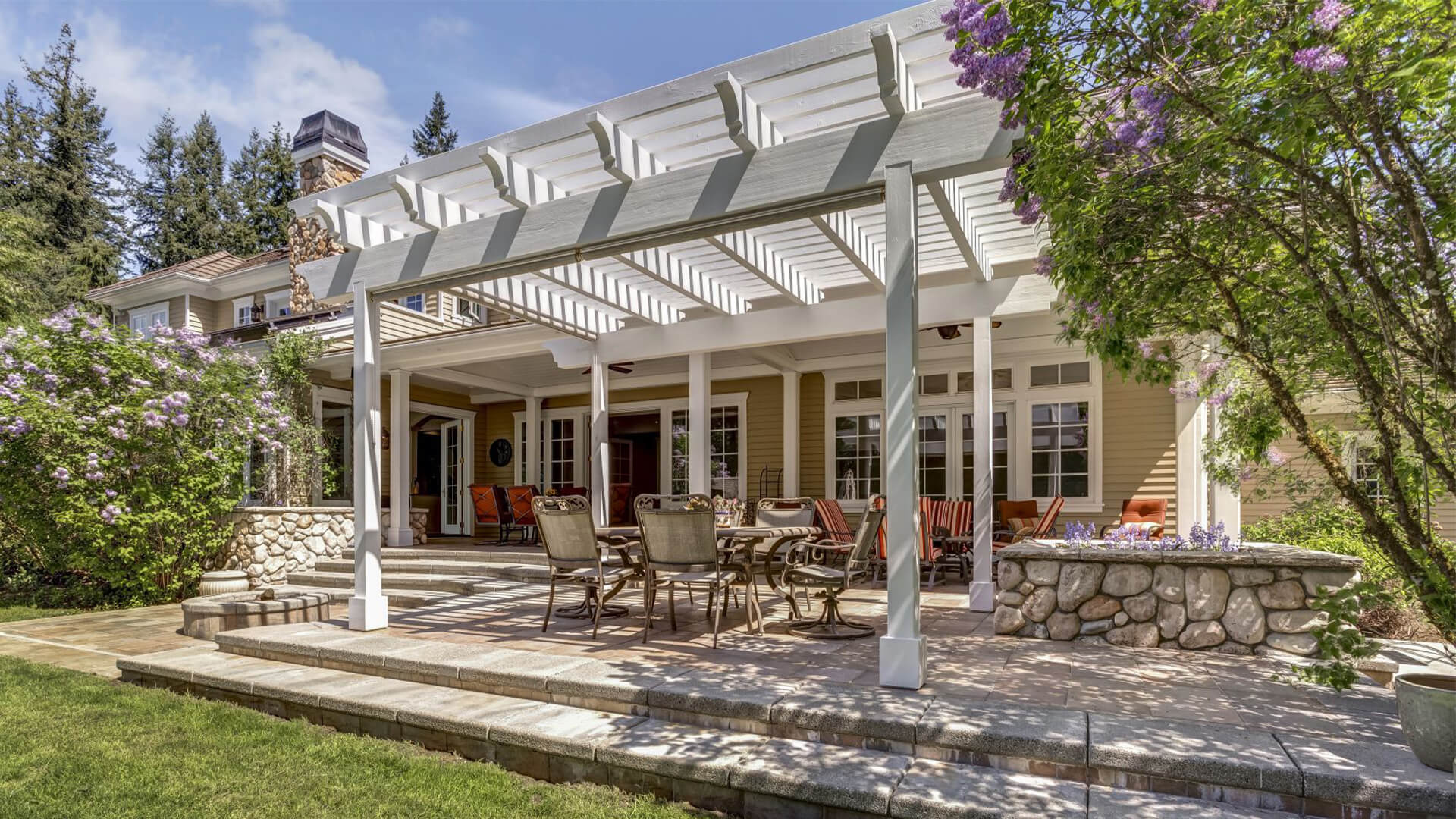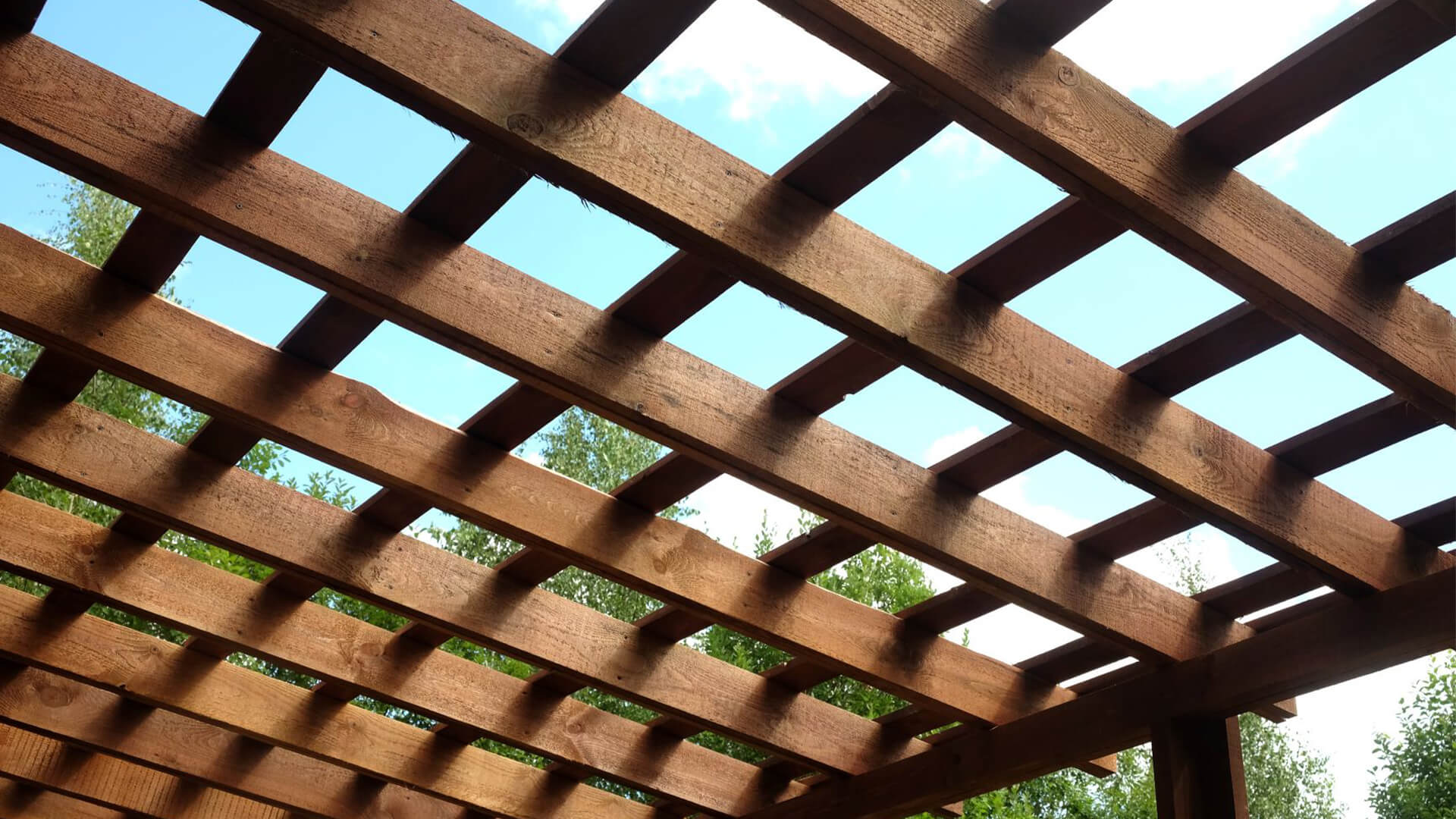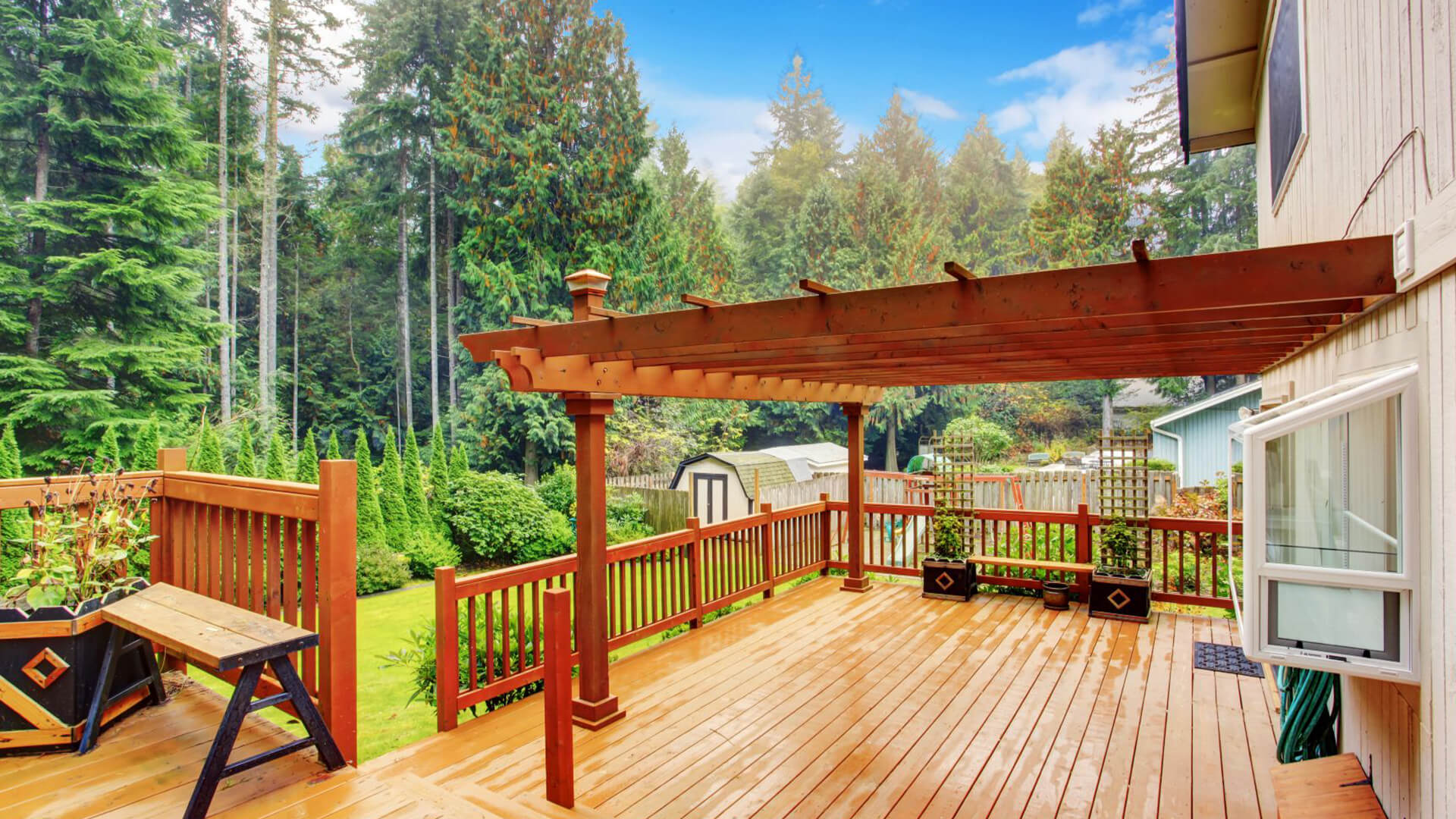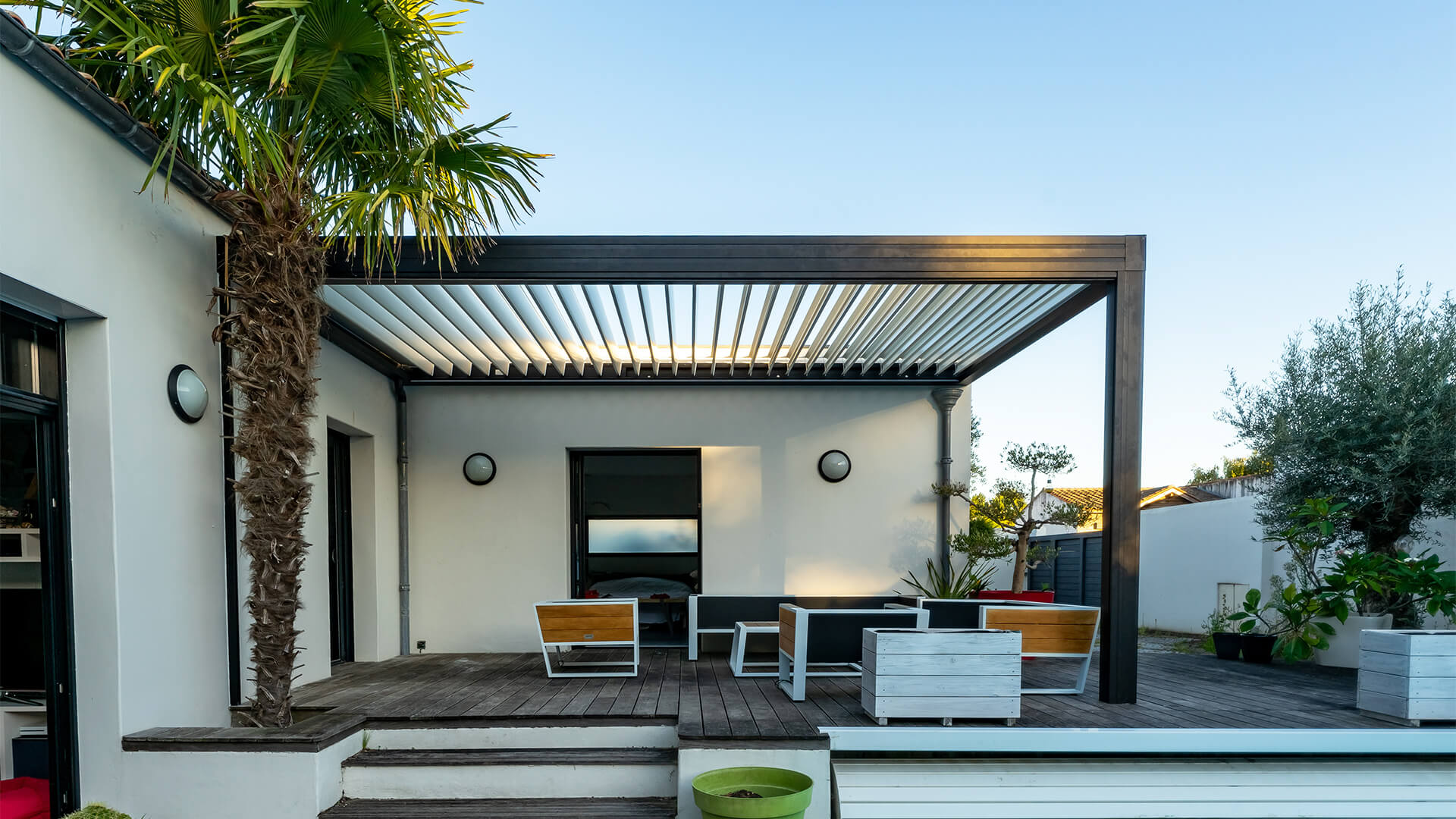The outdoor space of your home is one of its most significant components. If 2020 taught us one thing, it’s that none of us like being stuck indoors. Having an outdoor space to retreat to is important for many reasons, not least the benefits offered by fresh air and a connection to nature.
However, an outside space is considerably less enjoyable when it’s drab and empty. There are numerous features to introduce, but one of the increasingly popular options are pergolas. Despite their popularity, most people lack the knowledge to build one themselves, and styling them is a whole other issue. Read on for a “how to” on building and styling a pergola.
But first, what is a pergola?
Pergolas are large outdoor garden features that may serve as a walkway, extension of a house, or a link between pavilions. Typically, they consist of a square base, pillars (posts) at each corner (sometimes more, depending on its size), and an open roof. The roof is generally made of wooden cross beams.
The modern pergola is well-known for its ability to improve thermal comfort. Pergolas can be used for shade, they can extend off of decking areas, and they can also be fitted with outdoor furniture. For those interested in the latter option, you can consult online retailers like Neighbor outdoor furniture to get an idea of what’s available.

How to build a pergola?
Building a pergola is a big job, but it is not impossible. For those with the determination, skills, materials, and ideally, at least some carpentry experience, building a pergola is a great weekend project. Follow these steps to get your pergola up and going.
● Identify and measure a space for your pergola: First things first, you’ll need to know where the pergola’s going. Find this space, and measure it so you know that the intended dimensions are going to fit. Make sure you try to keep at least a foot of distance between the posts and any obstructions, like a fence.
● Check the ground for utility lines: You don’t want your posts to dig right into a water main, flushing away your pergola dreams in the process. Drive a stake on a string into the ground where you intend to place your pillars, and do this so each corner is connected. They must be perfectly straight and parallel.
● Measure corner angles of the string: Ensure the string is at the back corner of your stake, and measure the angle of it using a layout triangle. This must be a perfect 90 degrees.
● Mark post positions at the center point of the structure’s length: Using a tape measure, find the middle point of the string, and use a different type of string to tie a bow there. Do this along the opposite edge at the same spots, and drive a stake into the ground at each bow. Having six post positions will make your pergola an ideal backyard feature.
● Mark post holes with a bottomless bucket: Using a bottomless bucket, center each post inside so a ring is dug around it. Use powdered chalk around the perimeter, and remove the bucket and stakes carefully to maintain the circle and stake hole.
● Dig holes where the posts were: Use a posthole digger to dig holes at least three feet deep. Keep the hole within the chalk line.
● Place posts in the holes: Insider tip: before you do this, place two to three inches of rocks in the holes, this will act as drainage, prevent mold, and prolong the posts’ lifespan. Place posts and clamp to keep them perfectly vertical.
● Add concrete: Fill each posthole with quick drying concrete that doesn’t require mixing. Add the dry concrete and then add a gallon of water (or amount advised by instructions).
● Attach two parallel beams on either side of the front and back posts: Do this at the top using temporary supports. Drill two holes through the side beams and posts.
● Put carriage bolts through holes: Use a hammer to drive them through and tighten them with a socket wrench on the other side until the wood begins to compress.
● Use hurricane clips to attach cross beams: Like the bows, use a tape measure to ensure all distances are equal and consistent.

Now that you have your pergola, how to style it?
With a bit of creativity, your pergola can be suitable all year round. It might not be a match for Poland’s UNESCO Heritage Listed Centennial Hall in Wroclaw, but you may still be the envy of the neighbourhood if you follow some of these ideas.
● Freestanding garden pergola: Much like the instructions above would make. Put it where you want, how you want.
● Extension from side of house: Pergolas can be easily tweaked to your needs and can easily come off the side of your house, requiring fewer posts and less work.
● Vine covered pergola: Using plants like ivy to wrap around the posts and side beams can make your pergola feel like it grew out of your garden.
● Bamboo roof: This is an exotic style that can summon memories of your trips to Thailand.

In conclusion
Pergolas are a fantastic addition to your outdoor space. Using the instructions above, they are relatively simple to build, and amazingly beautiful once stylized to your liking.






























